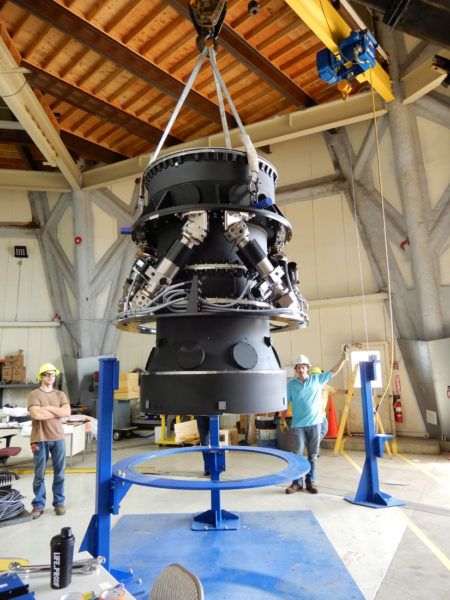
(Credit: DESI collaboration and KPNO/NOIRLab/NSF/AURA/R. Proctor)
New results from the first 3 years of DESI data strengthen hints that dark energy is evolving, with consequences for our understanding of nature and the fate of the Universe. Read more in the March 2025 BerkeleyLab Press Release. Videos discussing the results are available on the DESI YouTube channel. Further details are available in our guide to the publications reporting these results. The papers themselves are available here.
A new DESI data release is also now available for all to explore. The largest dataset of its kind ever shared, it contains information on 18.7 million galaxies, quasars, and stars. Read more in a companion BerkeleyLab Press Release.
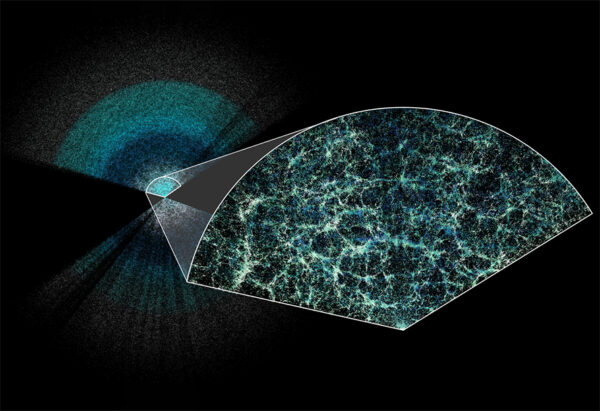
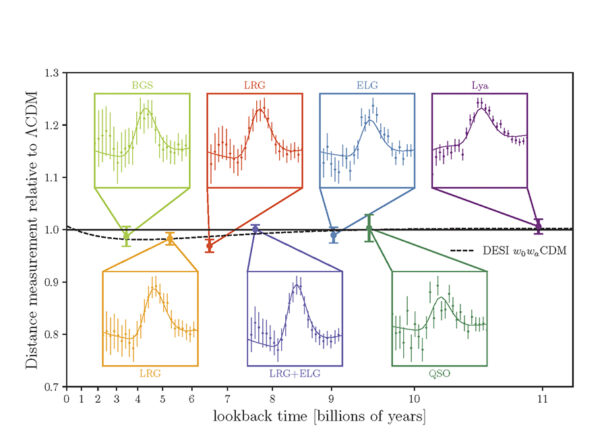
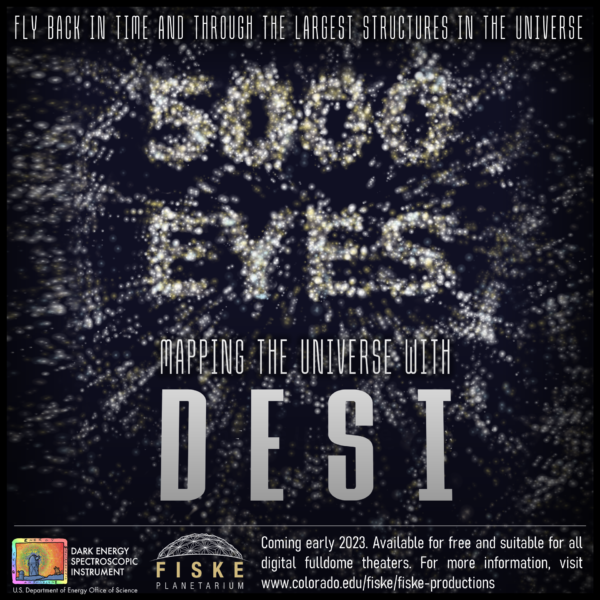
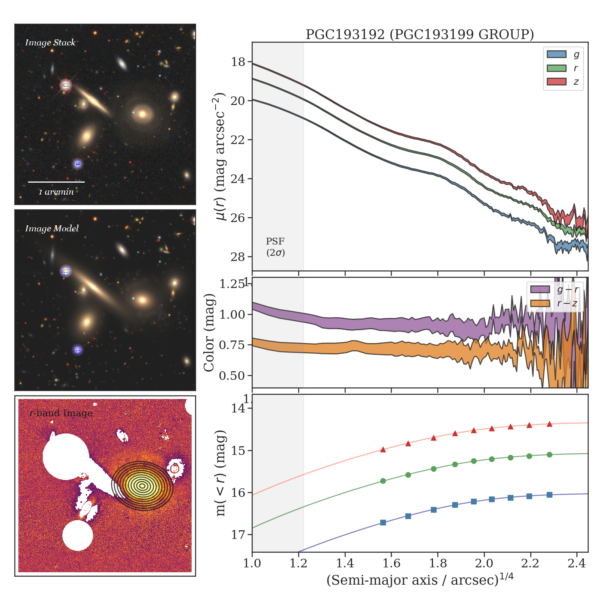
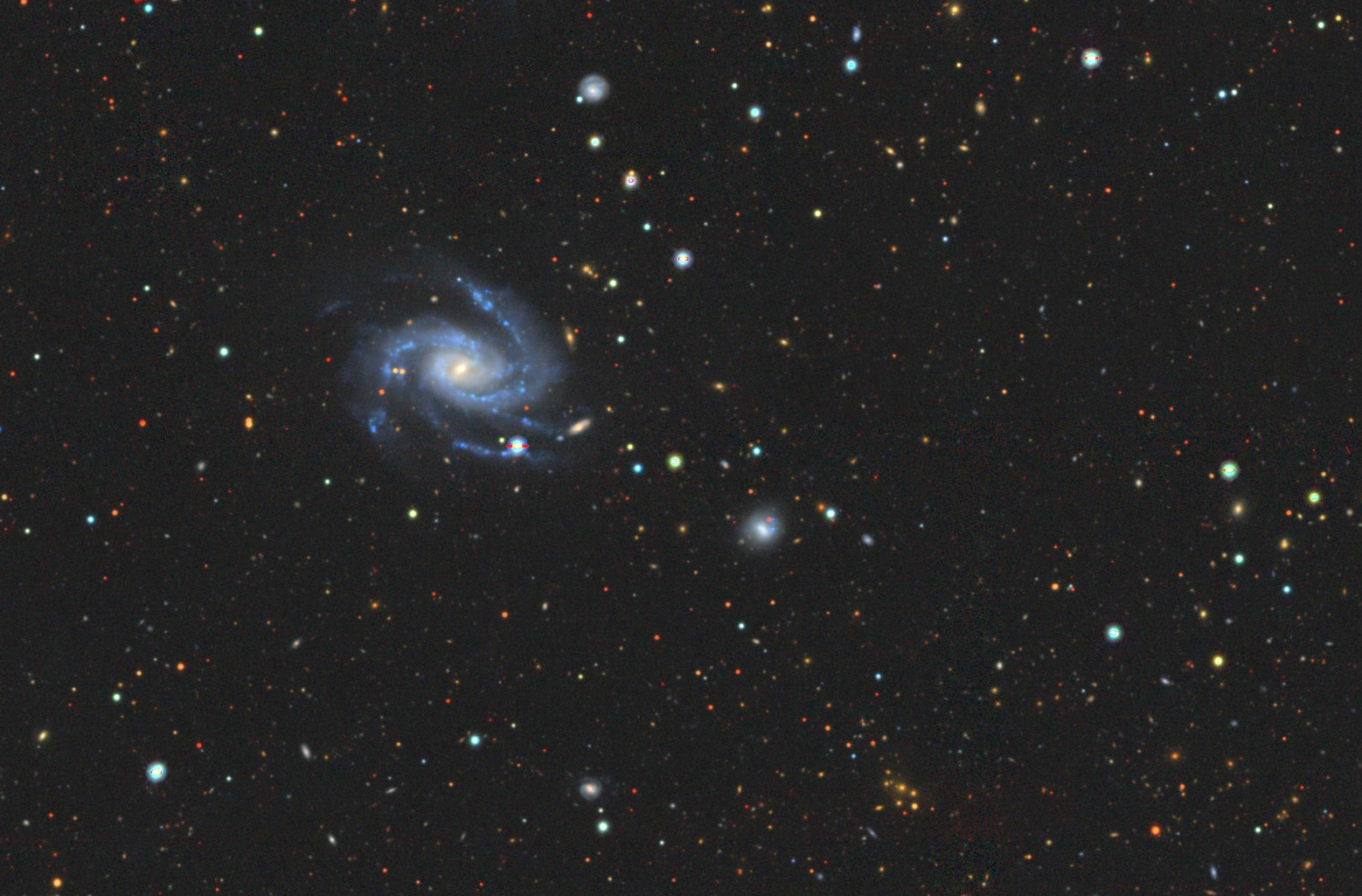
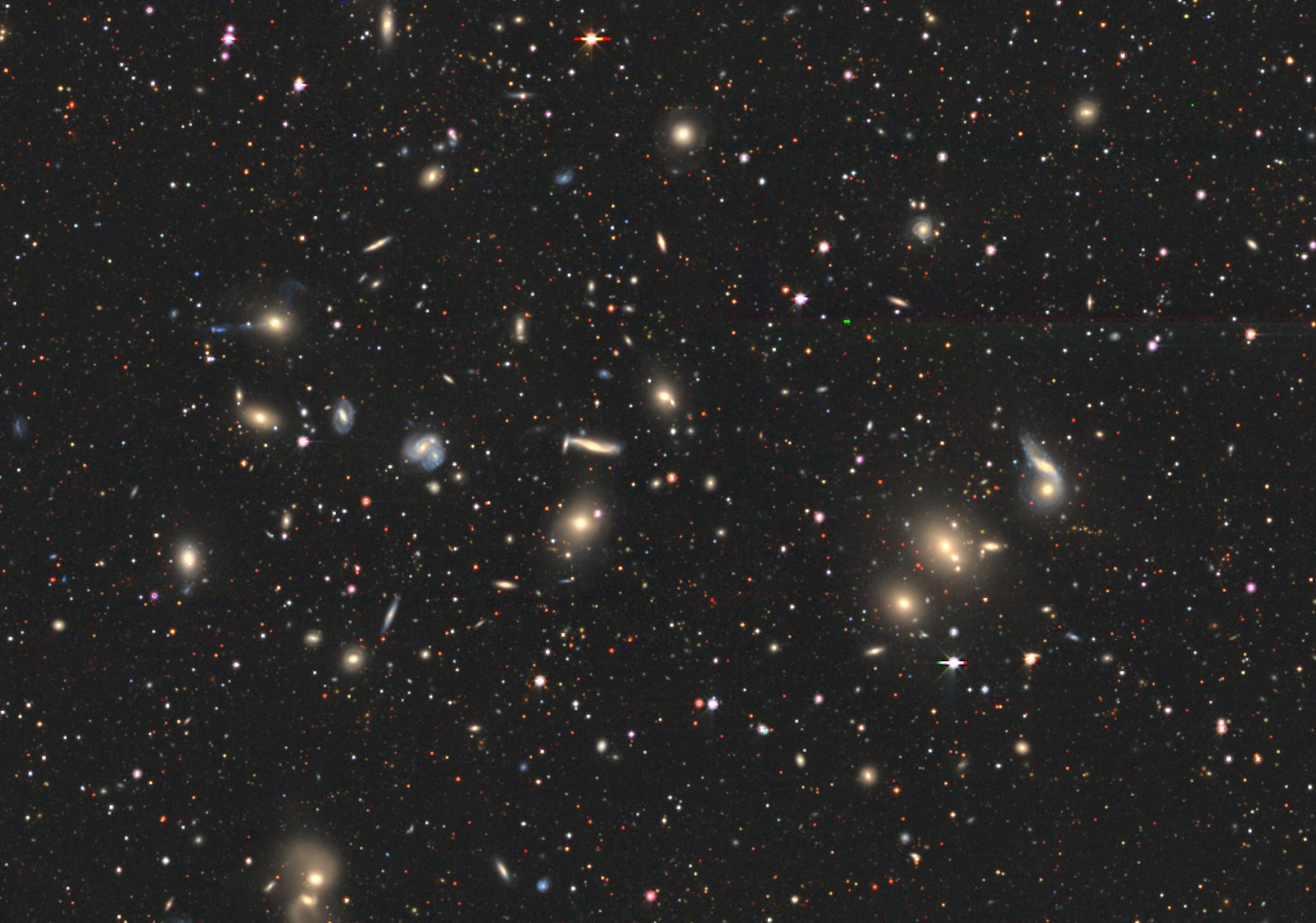
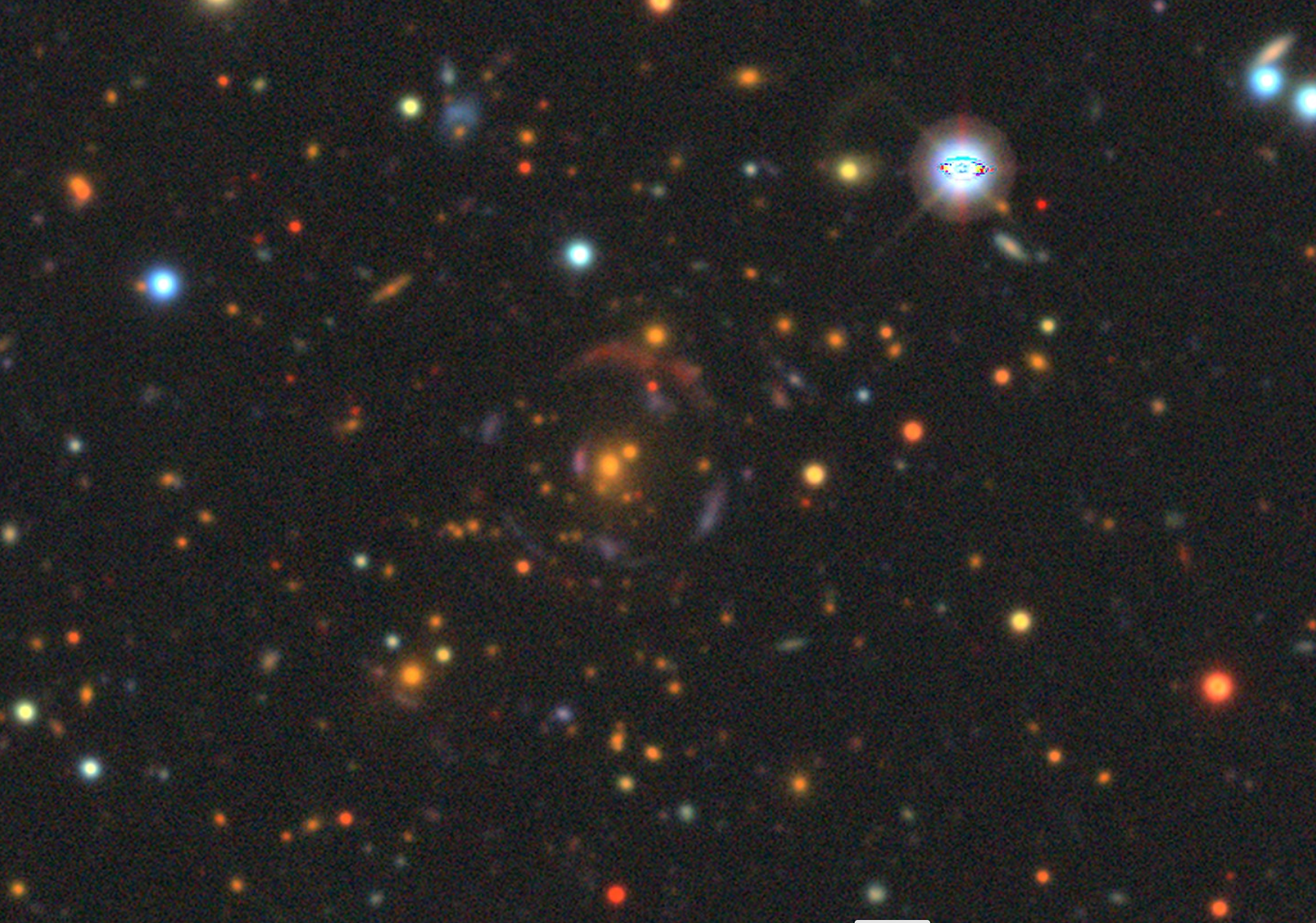
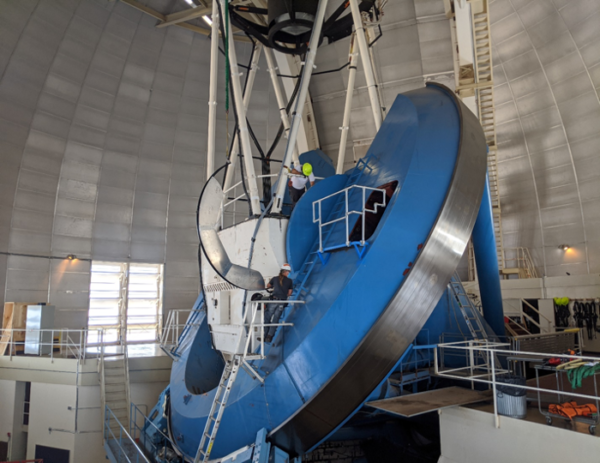
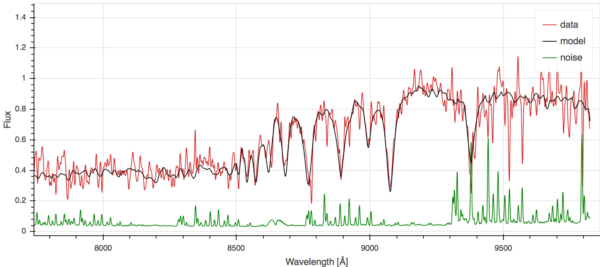
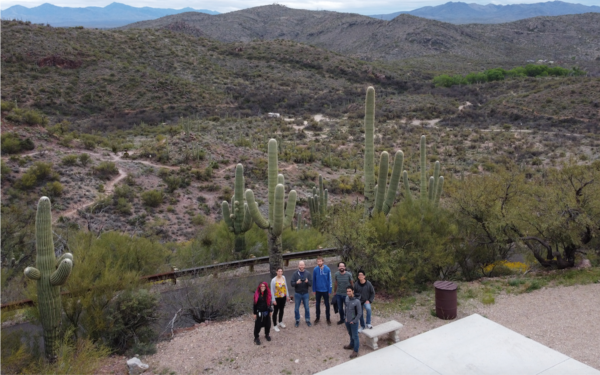
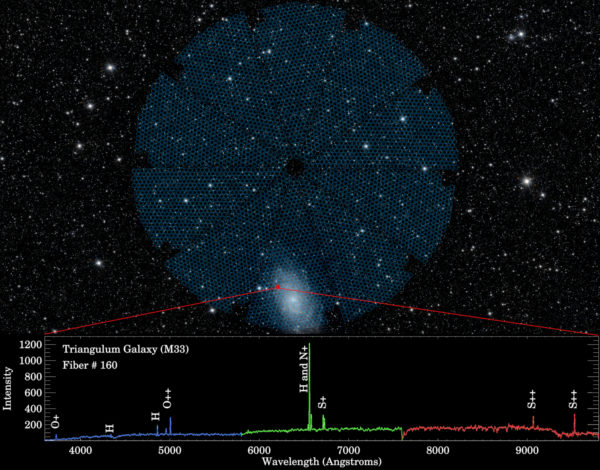 DESI Opens It’s 5,000 Eyes to Capture the Colors of the Cosmos!
DESI Opens It’s 5,000 Eyes to Capture the Colors of the Cosmos!